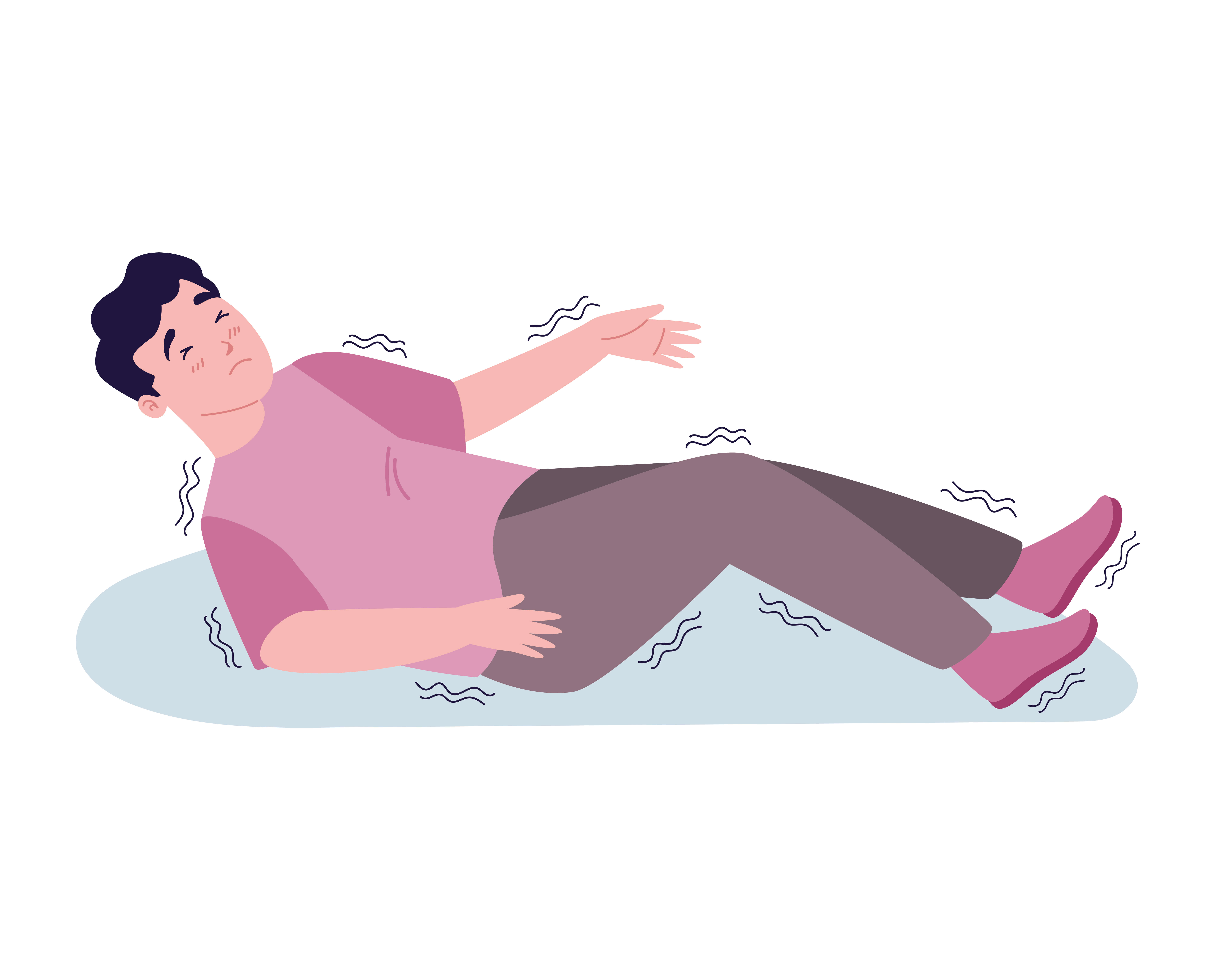Your body changes in countless ways as you grow older, including shifts in how your digestive system functions. Constipation in older people touches nearly one-third of adults past 60, bringing discomfort and sometimes significant pain during bathroom visits. Handling this common issue starts with understanding what happens inside an aging digestive tract and the practical steps that bring relief.
Root Causes of Constipation in Older Adults
Behind every uncomfortable day lies specific physiological changes that slow digestive transit. Constipation in older adults develops through several connected processes that work together to alter normal function.
Your intestinal muscles weaken naturally over time, reducing the power behind those important contractions pushing waste forward. Your body also produces less intestinal mucus, that essential lubricant making everything slide smoothly through your system. Without adequate lubrication, stool becomes harder, drier, and stubbornly slow-moving.
The medicine cabinet might secretly work against your digestive comfort as well. Are you taking pills that manage blood pressure, ease pain, lift your mood, or supplement iron? They rank among the worst causes of constipation. Nearly half of older adults taking three or more medications daily feel their digestive system slowing down. This is a side effect that is rarely mentioned during prescription discussions.
Movement matters tremendously for intestinal health, yet older people often move less throughout their day – sometimes from arthritis pain, muscle weakness, or balance worries. This daily stillness translates directly into intestinal stillness, allowing water absorption to continue too long and creating harder stools that refuse to move easily.
Meanwhile, mealtime patterns often undergo dramatic shifts with advancing years. Taste buds lose sensitivity, dental problems make chewing difficult, and appetite naturally decreases. Older men, in particular, tend to drop plant foods from their plates, dramatically lowering their fiber intake. This nutritional shift, paired with drinking less water, creates perfect conditions for constipation to develop and persist.
Your nervous system changes with time as well. Conditions like Parkinson's disease, nerve damage from diabetes, or past strokes disrupt the complex messaging system telling your bowels when and how to move. This neurological disruption leads to chronic constipation that resists simple solutions and demands specialized approaches.
The Gut-Brain Connection
Your digestive system and brain communicate constantly, creating connections that affect both physical comfort and mental clarity. Recent research reveals how constipation in older adults impacts not just bathroom habits but brain function, too, creating a compelling reason to address digestive health for cognitive benefits.
The trillions of microorganisms living in your digestive tract influence everything from digestion to immunity and cognitive function. As you age, this microscopic community undergoes significant shifts. The helpful bacteria supporting regular bowel movements typically decline while less beneficial varieties increase. This imbalance contributes directly to constipation while potentially altering brain chemistry through reduced production of mood-regulating compounds.
Chronic constipation triggers low-grade inflammation that doesn't stay confined to your digestive tract. Inflammatory messengers travel through your bloodstream, potentially crossing into brain tissues. For older people, this inflammatory response may worsen thinking problems or contribute to mood changes that family members notice.
The vagus nerve, your body's longest cranial nerve, serves as the primary communication highway between the gut and the brain. In the elderly, this nerve pathway often becomes less efficient, disrupting the signals regulating bowel movements. Simultaneously, digestive distress sends stress alerts to your brain through this same pathway, creating a cycle that affects both systems negatively.
Digestive discomfort from constipation in the elderly frequently fragments sleep, creating another path to cognitive impacts. Disrupted sleep impairs memory formation and problem-solving while further slowing digestive functions. Breaking this cycle requires addressing both sleep quality and digestive health.
Warning Signs of Constipation in the Elderly
Because everyone's digestive system works a little differently, it's helpful to know what patterns might suggest constipation in the elderly. Here are some key indicators to look out for:
- Bowel movements occurring less than three times weekly
- Consistent straining during at least 25% of bathroom visits
- Stool that appears hard, dry, or forms separate hard lumps
- Persistent sensation that the bowel hasn't completely emptied
- Feeling of blockage or obstruction in the rectal area
- Needing to use fingers to help remove stool
A frequent additional complication of constipation in older men is enlarged prostate glands, which can exert pressure on the rectum and exacerbate symptoms. In contrast, severe constipation in elderly women typically produces more pronounced discomfort due to pelvic floor muscles weakened by childbirth and the hormonal changes of menopause.
Health Risks of Untreated Constipation
Ignoring ongoing constipation opens the door to complications you'd rather avoid:
- Painful hemorrhoids and anal tears developing from pushing too hard.
- Rock-hard stool masses becoming trapped, requiring medical extraction.
- Rectal tissues stretching and sagging from constant pressure.
- Bladder control problems appear when stool compresses urinary structures.
- Social withdrawal sets in as discomfort makes outings uncomfortable.
Many older adults battling chronic constipation begin cutting back food intake, hoping less food means less digestive distress. This strategy backfired dramatically. Reduced nutrition weakens the digestive muscles further, worsening the very problem they hoped to solve.
Red Flags Requiring Medical Evaluation
Though occasional constipation rarely signals serious problems, these signs deserve prompt medical attention:
- Blood appearing in or on stool
- Sharp or persistent abdominal pain
- Unexplained weight loss
- Consistently pencil-thin bowel movements
- Sudden constipation without lifestyle changes
- Pattern of alternating constipation and loose stools
These symptoms might indicate inflammatory bowel conditions, infected intestinal pouches, or colorectal cancer – all occurring more frequently in the elderly and requiring immediate medical assessment.
Integrated Relief Approaches for Constipation in Older People
Addressing constipation demands solutions tailored to your specific health situation, with each approach serving both immediate treatment and long-term prevention. At MyLifeChoice, we focus first on these non-drug approaches that work naturally with your body's systems.
Fiber-Rich Food Solutions
Dietary fiber acts as nature's intestinal broom, gently sweeping waste through your digestive tract. Adding fiber-rich foods gradually helps restore normal function. For older adults with dental problems or swallowing difficulties, these softer options provide both treatment and prevention:
- Steamed carrots, zucchini, and sweet potatoes
- Berries mashed into yogurt
- Warm oatmeal sprinkled with ground flaxseed
- Smooth bean soups blended with herbs
- Applesauce mixed with chia seeds
A nutrient-dense diet supports not just digestion but your entire gut ecosystem. Work toward 25-30 grams of fiber daily, but increase gradually to prevent uncomfortable gas or bloating that might discourage you from continuing this essential preventive strategy.
Fluid and Movement Integration
Proper hydration softens stool, while physical activity stimulates the muscle contractions moving waste through your system. Older people benefit most from combining these approaches throughout the day:
- Drink a small glass of water, then take a five-minute walk after breakfast
- Sip fruit-infused water during gentle seated stretches mid-morning
- Enjoy a cup of warm broth before lunch, followed by standing arm circles
- Drink a refreshing beverage while doing gentle standing leg lifts mid-afternoon
- Sip herbal tea while performing seated torso twists before dinner
These paired activities create powerful synergy – the fluids provide the moisture needed for softer stools, while the movement stimulates intestinal muscles to use that moisture effectively. Even older adults with limited mobility benefit from this combination approach that serves both as treatment for existing constipation and prevention of future episodes.
Bathroom Habit Optimization
Your digestive system thrives on consistency and proper mechanics. These practical approaches help maximize your body's natural elimination processes:
- Set aside toilet time 15-30 minutes after meals, particularly breakfast, when your natural gastrocolic reflex peaks
- Use a small footstool to elevate your knees above your hips, creating a more anatomically correct position
- Lean slightly forward while keeping your back straight to align your digestive tract properly
- Practice gentle breathing rather than holding your breath during bowel movements
- Allow adequate time without feeling rushed or pressured
These simple techniques work together to make elimination more complete and comfortable.
Medication Selection
When lifestyle changes don't bring sufficient relief, several medication categories offer additional support:
- Bulk-forming agents
Psyllium husk, methylcellulose, and other fiber supplements work by absorbing water to create softer, bulkier stools that move more easily. These generally rank among the safest options for long-term use, both for treatment and prevention.
- Stool softeners and osmotic agents
Docusate sodium and polyethylene glycol pull water into the intestines, softening stool naturally. The best stool softener for elderly people typically comes from this group, as they work gradually without causing sudden urgency or embarrassing situations. These serve particularly well as transitional treatments while dietary and lifestyle changes take effect.
- Selective stimulants
Products containing bisacodyl or senna prompt the intestinal muscles to contract more vigorously. Use these sparingly and short-term to address acute constipation episodes while implementing more sustainable preventive measures.
While combination therapy frequently proves most effective for severe constipation in elderly women, especially those with pelvic floor weakness, it's important to remember that the selection of any laxative requires careful consideration. The best laxative for elderly women varies based on medication interactions, kidney function, and overall health status – always check with your healthcare provider before starting any new product.
Living with Digestive Comfort
Constipation in older people doesn't have to control your daily life. Each small step, from adding a piece of fruit at breakfast to taking a brief walk after dinner, builds toward improved digestive function. Most older adults can restore comfortable bowel habits through these integrated approaches that address both immediate discomfort and long-term prevention.
Your body responds uniquely to different interventions. What brings quick relief to your neighbor might work differently for you. Pay attention to how your system reacts to various changes, adjust your approach accordingly, and track your progress. When self-care measures don't bring sufficient improvement, don't hesitate to seek professional guidance. Healthcare providers can offer specialized testing and tailored treatments addressing the specific factors behind your symptoms.
Digestive comfort isn't merely about physical relief – it restores confidence, spontaneity, and enjoyment to daily activities. The journey back to regularity might take patience, but the independence and comfort you gain make every effort worthwhile.




















.webp)

.png)


